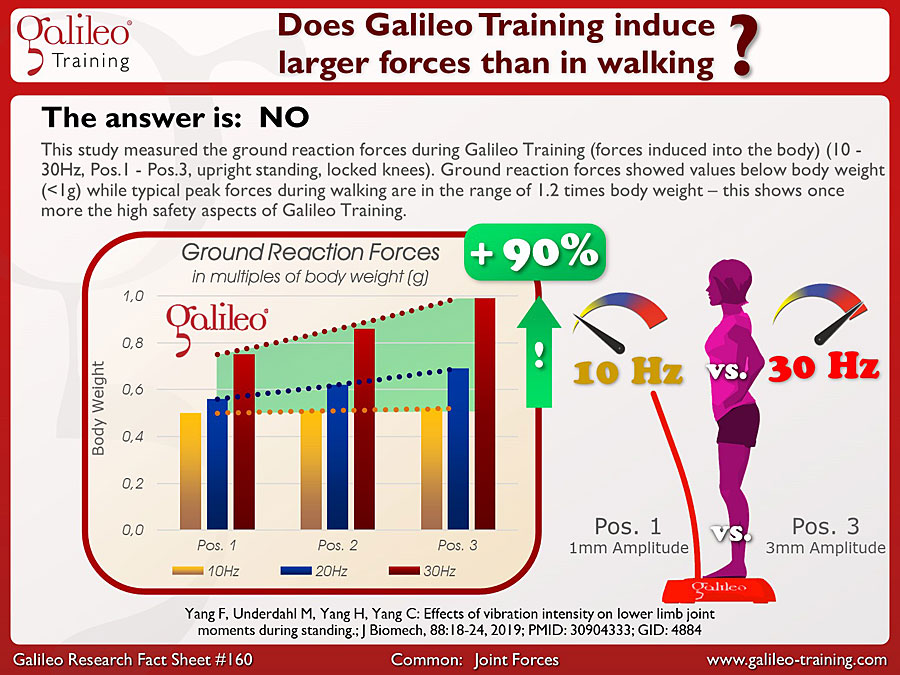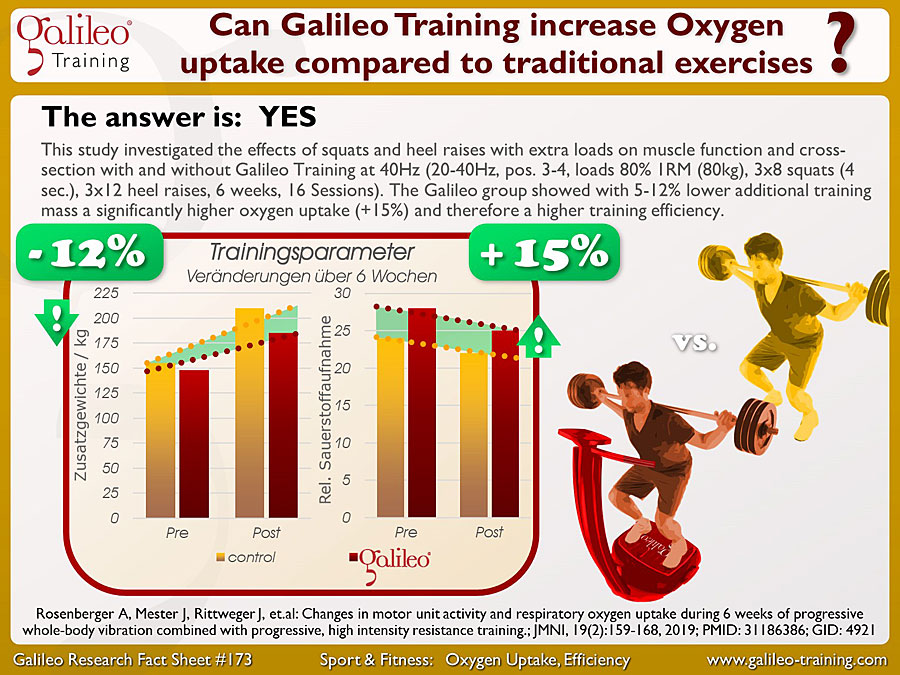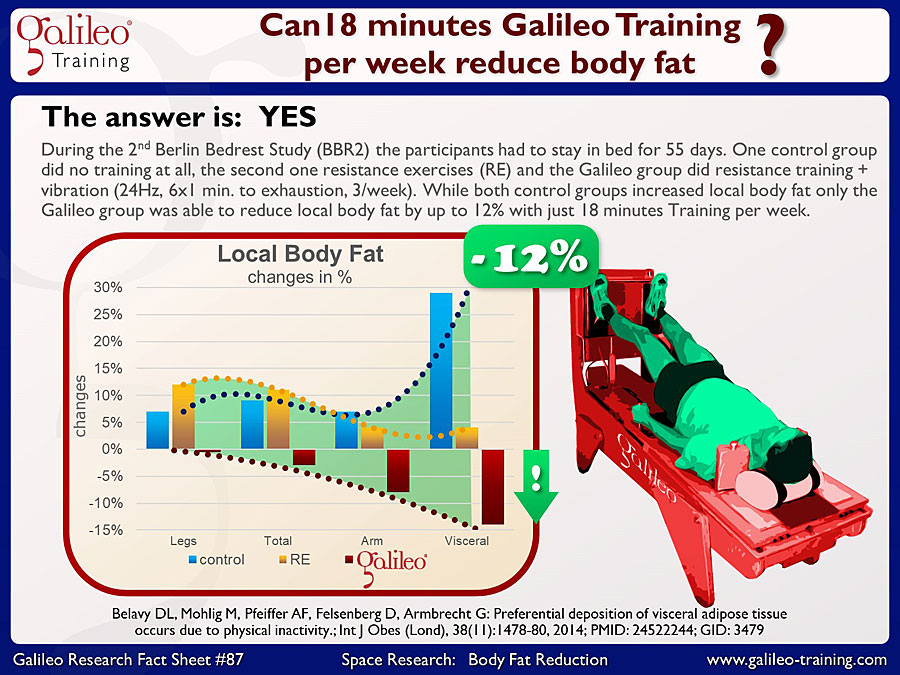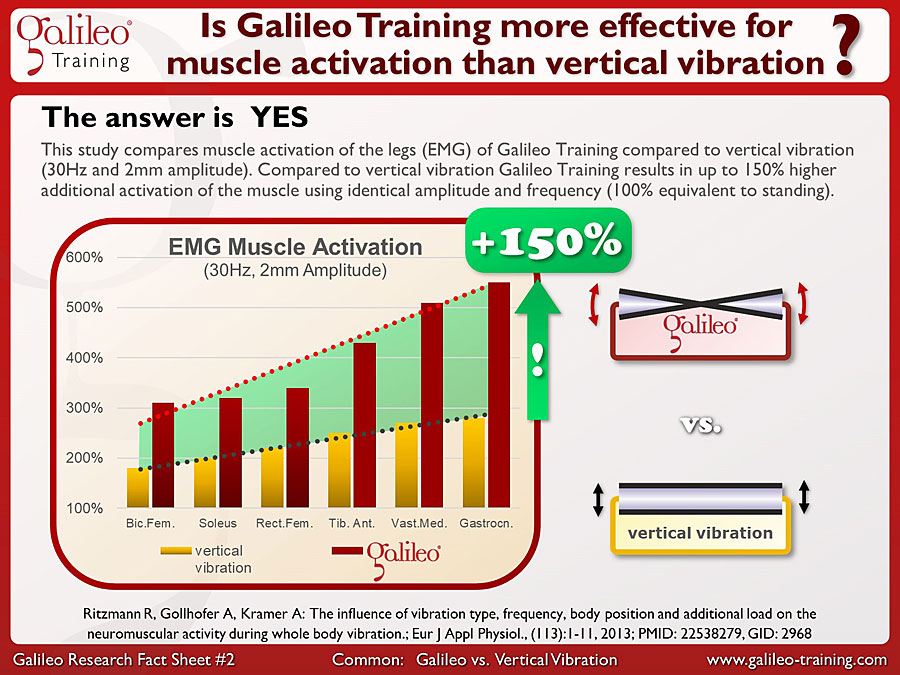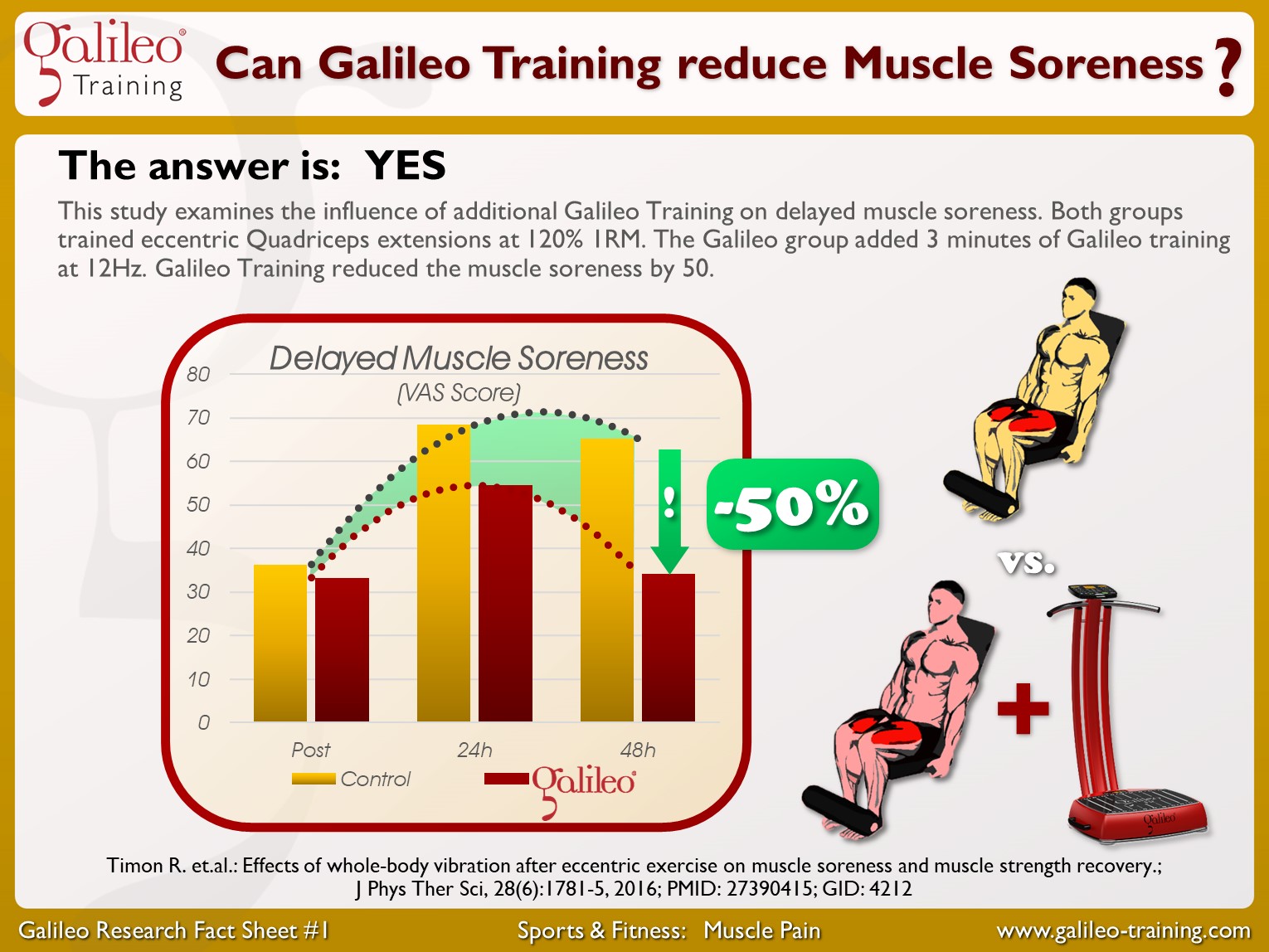Galileo Research Facts No. 167: Are Joint Torques during Galileo Training Dependent on Frequency and Amplitude?
This study investigates the effects of Frequency and Amplitude during Galileo Training on joint torques (10, 20, 30Hz, pos.1, pos.2, pos.3, upright standing with straight legs). Joint torque showed an significant increase with increasing frequency and amplitude of up to 250% - nevertheless joint torques stayed below those of natural walking...
Galileo Research Facts No. 160: Does Galileo Training induce larger forces than in walking?
This study measured the ground reaction forces during Galileo Training (forces induced into the body) (10 - 30Hz, Pos.1 - Pos.3, upright standing, locked knees). Ground reaction forces showed values below body weight (<1g) while typical peak forces during walking are in the range of 1.2 times body weight – this shows once more the high safety aspects of Galileo Training...
Galileo Research Facts No. 173: Can Galileo Training increase Oxygen uptake compared to traditional exercises?
This study investigated the effects of squats and heel raises with extra loads on muscle function and cross-section with and without Galileo Training at 40Hz (20-40Hz, pos. 3-4, loads 80% 1RM (80kg), 3x8 squats (4 sec.), 3x12 heel raises, 6 weeks, 16 Sessions). The Galileo group showed with 5-12% lower additional training mass a significantly higher oxygen uptake (+15%) and therefore a higher training efficiency...
Galileo Research Facts No. 123: Can Galileo Training during squats increase muscle activation with each repetition?
This study investigates the effects of exhaustive squats with and without Galileo Training on muscle activation (EMG) (5*10 Sets deep squats, with & without Galileo Training, 22Hz, pos. 4, extra weight: 10RM = 60% Body mass). Compared to the control group without vibration the Galileo Group could almost triple muscle activation (+196%) during eight repetitions...
Galileo Research Facts No. 87: Can 18 minutes Galileo Training per week reduce body fat?
During the 2nd Berlin Bedrest Study (BBR2) the participants had to stay in bed for 55 days. One control group did no training at all, the second one resistance exercises (RE) and the Galileo group did resistance training + vibration (24Hz, 6x1 min. to exhaustion, 3/week). While both control groups increased local body fat only the Galileo group was able to reduce local body fat by up to 12% with just 18 minutes Training per week...
Galileo Research Facts No. 2: Is Galileo Training more effective for muscle activation than vertical vibration?
This study compares muscle activation of the legs (EMG) of Galileo Training compared to vertical vibration (30Hz and 2mm amplitude). Compared to vertical vibration Galileo Training results in up to 150% higher additional activation of the muscle using identical amplitude and frequency (100% equivalent to standing)...
Galileo Research Facts No. 1: Can Galileo Training reduce Muscle Soreness?
This study investigates the influence of Galileo Training on muscle soreness. Both groups trained eccentric quadriceps extension at 120% 1RM. The Galileo group then trained for 3 minutes with Galileo at 12Hz. Galileo Training halved the subjective muscle soreness...

